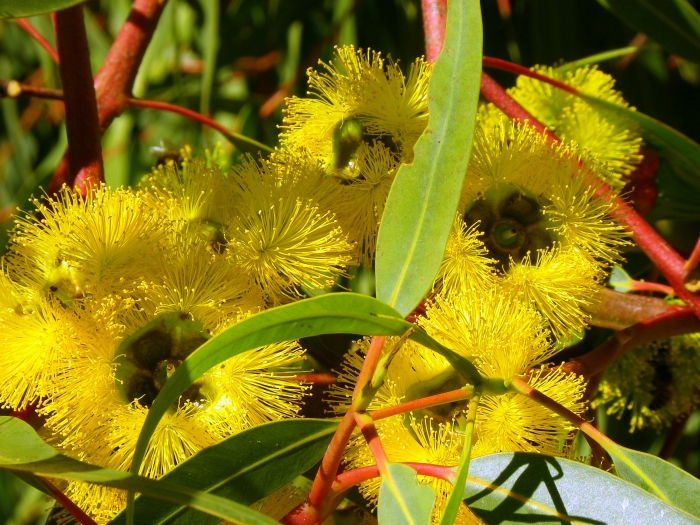Helmet Nut Gum
(Eucalyptus erythrocorys)
Helmet Nut Gum (Eucalyptus erythrocorys)
/
/

Liese Coulter, CSIRO
CC BY 3.0
Image By:
Liese Coulter, CSIRO
Recorded By:
Copyright:
CC BY 3.0
Copyright Notice:
Photo by: Liese Coulter, CSIRO | License Type: CC BY 3.0 | License URL: https://creativecommons.org/licenses/by/3.0 | Uploader: File Upload Bot (99of9) | Publisher: Wikimedia Commons | Title: CSIRO_ScienceImage_11601_Flowering_gum_Margaret_River_Western_Australia.jpg | Notes: User created page with UploadWizard |





































Estimated Native Range
Summary
Eucalyptus erythrocorys, commonly known as Helmet Nut Gum, is an evergreen tree native to the open woodlands and plains of Western Australia. It is a small tree or mallee with an open spreading habit, usually growing to a height of 3–10 m (9.8–32.8 ft) and a width of 3–6 m (9.8–19.7 ft). The bark is smooth, and the adult leaves are sickle-shaped to curved. Notable for its large, ornamental flower buds in groups of three with a bright red operculum, Helmet Nut Gum produces bright yellow to yellowish-green flowers. The stamens are arranged in four bundles, and the flowering season is between February and April. The fruit is a woody, sculptured, broadly bell-shaped capsule that can be so numerous they weigh the branches down, creating a weeping habit.
Helmet Nut Gum is valued for its showy flowers, which attract nectar-loving birds, and its adaptability to a range of conditions, including drought and smog. It is a reasonably fast grower and can be used in urban planting, as a specimen tree, and in coastal gardens due to its tolerance to sea breezes. The tree’s flowers are also used in wreaths. While it is frost tender, it thrives in full sun and well-drained soils. It can be grown in containers, making it versatile for various garden settings. Light pruning can maintain its shape and manage its sometimes untidy appearance. However, gardeners should be aware that the tree is known to shed limbs due to the weight of the fruit.CC BY-SA 4.0
Helmet Nut Gum is valued for its showy flowers, which attract nectar-loving birds, and its adaptability to a range of conditions, including drought and smog. It is a reasonably fast grower and can be used in urban planting, as a specimen tree, and in coastal gardens due to its tolerance to sea breezes. The tree’s flowers are also used in wreaths. While it is frost tender, it thrives in full sun and well-drained soils. It can be grown in containers, making it versatile for various garden settings. Light pruning can maintain its shape and manage its sometimes untidy appearance. However, gardeners should be aware that the tree is known to shed limbs due to the weight of the fruit.CC BY-SA 4.0
Plant Description
- Plant Type: Tree
- Height: 10-30 feet
- Width: 9-20 feet
- Growth Rate: Moderate
- Flower Color: Yellow
- Flowering Season: Summer, Fall
- Leaf Retention: Evergreen
Growth Requirements
- Sun: Full Sun
- Water: Medium
- Drainage: Slow, Medium
Common Uses
Bee Garden, Bird Garden, Butterfly Garden, Drought Tolerant, Fragrant, Hummingbird Garden, Low Maintenance
Natural Habitat
Native to the open woodlands and plains of Western Australia
Other Names
Common Names: Bookara Gum, Red-Cap Gum, Illyarie
Scientific Names: , Eucalyptus erythrocorys, Eudesmia erythrocorys,
GBIF Accepted Name: Eucalyptus erythrocorys F.Muell.